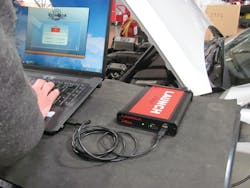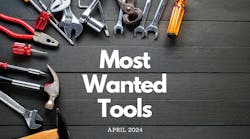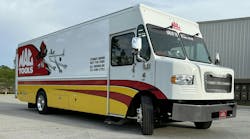Beginning with model year 2018, automakers will be required to provide all OBD-II information necessary for diagnosis and repair of vehicles. This also includes the necessary OEM software information needed to complete vehicle reflashing.
Reflashing, sometimes referred to as reprogramming, is the process of updating a vehicle’s ECU calibration software with an updated version of the software.
“Reflashing is simply updating the entire vehicle electronic software network with the latest OEM version,” says John McNelis, Manager, Sales and Marketing, DG Technologies.
McNelis explains manufacturers issue these software updates as a “solution to drivability problems, system updates or new safety regulations. This could be when the transmission shifts, how much fuel the engine receives, how quickly the airbag goes off or how fast the window goes up, etc.”
Reprogramming is software based, so it can be a more challenging sell to the customer. There are still steps distributors can take to be the resource for customers, and to assist with answering questions that come about when technicians or shop owners are discussing this product category.
Right to Repair and the history of J2534
Before having access to the necessary information to complete reflashing, independent repair shops would send customers back to the dealership to have this service completed, or they might call a mobile diagnostic technician complete the service.
This is because there was previously no standard among automakers for this software update information to communicate with a vehicle’s ECU. Many OEMs would use their own unique software language. “This made diagnostics and reprogramming different for every manufacturer, even individual car platforms within the same manufacturer,” says McNelis. “Tool and software developers had to communicate with all of these different formats” prior to the J2534 standard.
This is not to be confused with the OBD-II global standard.
Since 1996, vehicles have been outfitted with a standard access point with the implementation of some diagnostic data – for emissions-related issues – with the OBD-II standard. Since then, additional standards, such as the J2534 standard, have been adopted to complete additional diagnosis, repairs and updates on today’s vehicles.
In 2004, SAE International J2534 Standard was introduced to “Provide the framework to allow reprogramming software applications from all vehicle manufacturers the flexibility to work with multiple vehicle data link interface tools from multiple tool suppliers,” according to the SAE International website.
Essentially, this allows the automotive aftermarket access to any emission-related programming OEM information in a standardized format.
The J2534 standard was solidified with the implementation and adoption of the Right to Repair Memorandum of Understanding (MOU).
The MOU states automakers must be voluntarily compliant (or, in the case of the state of Massachusetts, mandated) to provide access to OE level data to consumers and the automotive aftermarket. This include access to diagnostic and repair information, at the dealer level, for 2002 and newer vehicles; as well as pass-thru support beginning with 2018 model year vehicles.
“Right to Repair has opened up the capabilities of SAE J2534 devices to the same levels the dealerships have for programming and diagnostics," says Glen Eaton, Product Manager, J2534 Products, Drew Technologies. "Imagine being able to own one tool and have the same functions as multiple automotive dealership makes. SAE J2534 also provides the information so that all automotive manufacturers’ software will work through a single J2534-compliant pass-thru device.”
Tools needed for reflashing
There is a relatively short list of equipment necessary to complete reflashing on a vehicle:
- A reliable internet connection
- A dedicated laptop for reflashing service, which connects to the pass-thru device
- Access to OEM software subscription, available through NASTF.org or accessible through the pass-thru device
- A J2534 pass-thru device / interface adapter, which connects to the vehicle
- A battery maintainer
The battery maintainer is crucial because it provides a steady amount of voltage while the programming event is being completed. Separate from a traditional battery charger, battery maintainers for J2534 reprogramming provide "clean" power with no voltage spikes or variances, which could otherwise damage a module.
“Some programming events can take a while and put a significant drain on the battery,” Eaton explains. “If the battery voltage dips below the required values (about 14V), you're in for a treat of error codes that may or may not mean different things or, in the worst case scenario, a failed programming event and an expensive door stop.”
So what’s the actual process for completing vehicle reflashing? There is some setup involved. Users must first have the necessary equipment on hand – a Windows platform computer connected to a J2534-compliant pass-thru device, which is then connected to the vehicle through the OBD-II port – and obtain access to the OE software to aid in the reflashing.
After setup, users start the reflashing process and follow the computer prompts to complete it.
The OEM subscription information will be the variable which changes for every reflashing event, because it’s dependent on how much the OEM charges for this information.
“The user must pay to subscribe to the OEM service website to access the latest vehicle software calibration files,” says McNelis.
And that price tag varies substantially, depending on the vehicle manufacturer. “Many start at $24.95 per day, but some require an annual subscription ranging from $750 to $1,300 per year,” explains McNelis.
“This separation of reprogramming and diagnostics for newer cars and older cars is a major factor in the price difference of some interface adapter tools on the market today. Distributors and shop owners should buy and sell tools that will do both. They are more expensive,” says McNelis.
What distributors can do
While the actual tooling for reflashing seems minimal, it’s important to be aware of this service. As vehicles become more technologically advanced and run on more software programs, and have more sensors, independent repair shops will start to more readily offer this service to compete.
To be an educational resource for customers, and to stay up on current technology, Eaton recommends a number of steps distributors can take:
- Have the J2534 equipment on display in the truck
- Consider watching and showing how-to videos, available from NASTF.org
- Attend training classes and demonstrations at trade shows when available
- Contact a J2534 equipment supplier and request a representative provide a presentation/demonstration on-site
“Support is key to successfully using a J2534 device,” says Eaton. By working with reputable companies for the J2534 reflashing equipment and battery maintainers, this ensures customers can complete the service effectively, and reach out to the necessary tech support if and when needed.
“One big question distributors can ask to start a conversation is, ‘What do you do when you need to program a vehicle?’ There are a number of responses they might receive, but if a technician is waiting or sending their customers’ vehicle elsewhere, they're potentially missing out on an opportunity,” says Eaton.
Similar to vehicle reflashing, consumers are already familiar with regular updates for other technology devices, such as smartphones and computers.
“Every distributor should be able to teach the technicians and shop owners how to tell customers that their car software is out of date, what that means, how they can update it, and how much that will cost compared to other places,” says McNelis.
“(Customers) must be educated on what the update will solve or enhance,” McNelis adds. “Repair shops must be able to quickly assess if a car is running old software and truthfully advise what the new software will do for (customers). Distributors should help shop owners find the information on what the latest software updates will do for the car. Shops need to create a reputation of being tech savvy; the distributors need to teach (shops) how to do that.”


